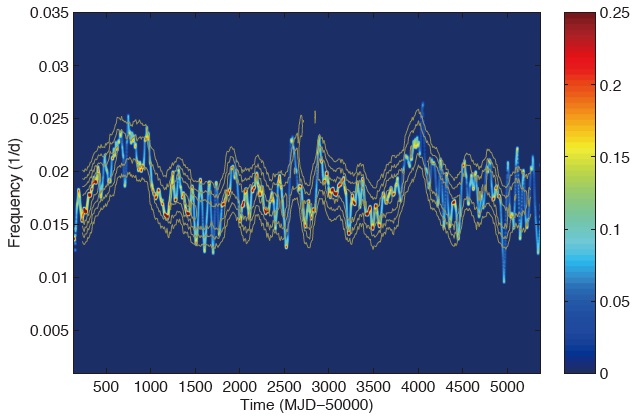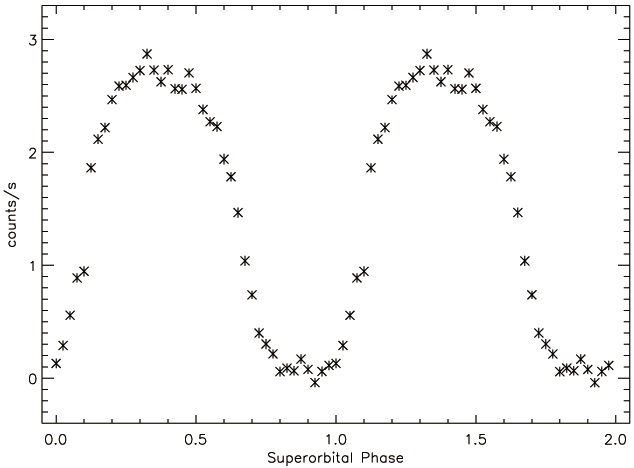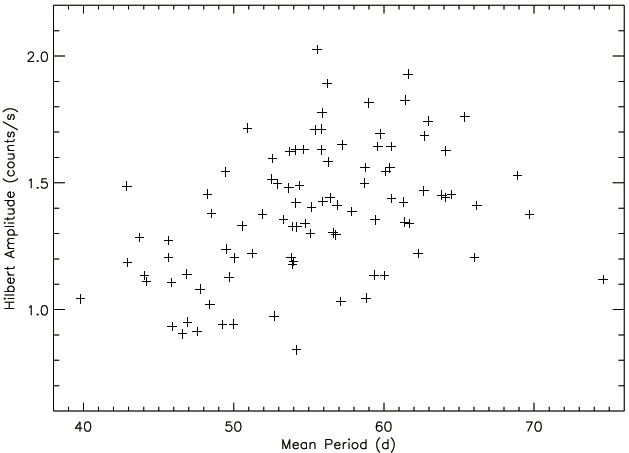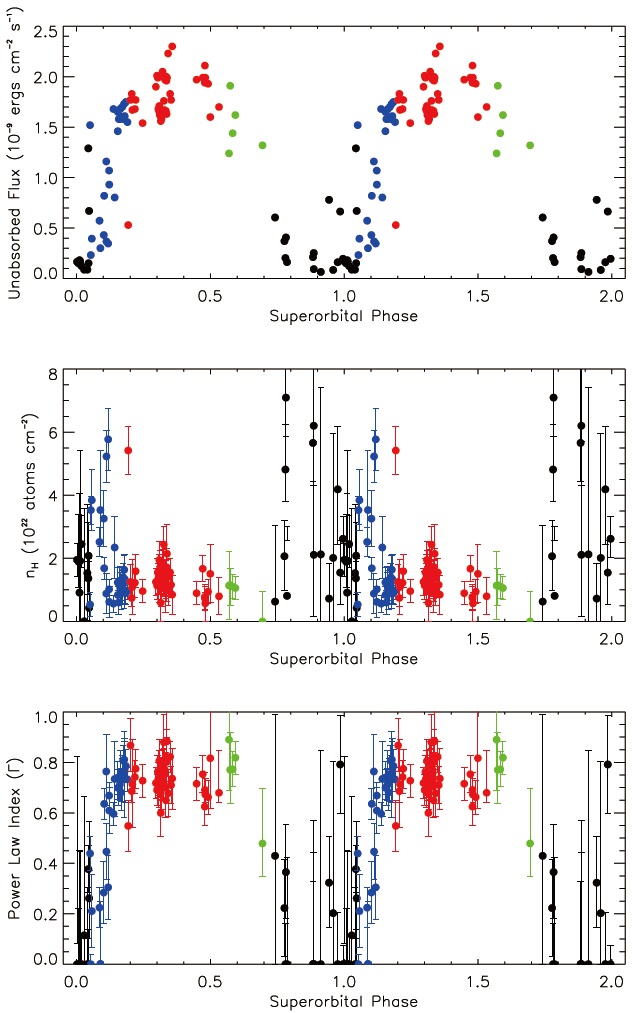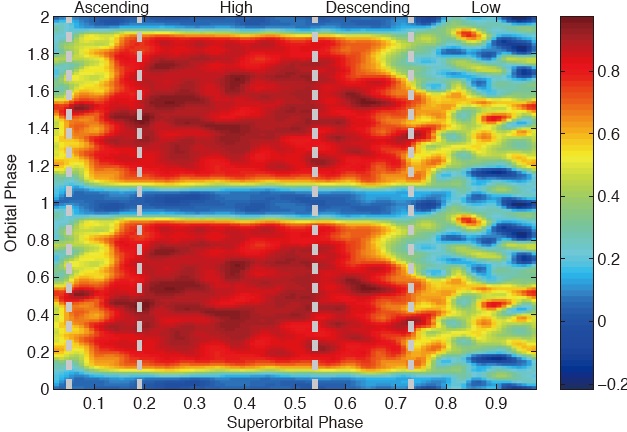



The high-mass X-ray binary SMC X-1 consists of a 1.06 M⊙ neutron star (van der Meer et al. 2007) and a 17.2 M⊙ supergiant (Reynolds et al. 1993). The orbital period of this system is ~3.89 d obtained from the X-ray eclipse. Gruber & Rothschild (1984) found that the SMC X-1 exhibits an X-ray periodicity with a rough time scale of 60 d. This periodicity was then confirmed by Wojdowski et al. (1998) and the cycle lengths were reported to vary with time. The behavior of the period variation was investigated after several timefrequency analysis techniques, like the dynamic power spectrum (Clarkson et al. 2003) and the slide Lomb-Scargle periodogram (Trowbridge et al. 2007), were applied on the All-Sky Monitor (ASM) light curve. We present our analysis by using of a recently developed time-frequency analysis technique, the Hilbert-Huang transform (HHT), to explore the timing properties of the superorbital modulation. Furthermore, based on the phase defined in the HHT, the superorbital phase-resolved analysis on both the spectral behaviors and the variation of orbital profiles are also presented.
The dwell data, collected by the ASM onboard
curve to investigate the variation of superorbital period. Furthermore, the data collected by the Proportional Counter Array (PCA) onboard
3. THE HILBERT-HUANG TRANSFORM
The HHT, which is proposed by Huang et al. (1998), is designed to analyze the non-linear and non-stationary time series. The normalized Hilbert transform was used to obtain the instantaneous frequency of the superorbital modulation. However, the Hilbert transform can only be applied on the intrinsic mode functions (IMFs) to get meaningful instantaneous frequency. We used the ensemble empirical mode decomposition, proposed by Wu & Huang (2009), to decompose the ASM light curve into several IMFs.
After decomposing the light curve into several IMFs, we applied the normalized Hilbert transform on them to obtain the Hilbert spectrum. Fig. 1 shows the Hilbert spectrum that contains information of frequency and amplitude variation in a color map, which is stacking with the dynamic power spectrum in contour for comparison. We noticed that the Hilbert spectrum is basically consistent with the dynamic power spectrum, but the resolutions are better in both the time and frequency domains. Since the HHT provided us a well-defined phase of the superorbital modulation, we folded the light curve according to the superorbital phase to obtain the asymmetric superorbital profile, which is shown in Fig. 2. Furthermore, we obtained a significant correlation
between the modulation period and the amplitude shown in Fig. 3. This correlation is similar to that between the main-on flux and the superorbital period of Her X-1 (Still & Boyd 2004). Both of the examples are inconsistent with the prediction of radiation-induced warp disk (Wijers & Pringle 1999).
5. SUPERORBITAL PHASE-RESOLVED ANALYSIS
We further studied the superorbital phase-resolved spectroscopic properties of SMC X-1 by using all the PCA observations during 1996 and 2004. The standard-2 mode spectrum can be fitted with a cutoff power law continuum and a Gaussian emission line centered at 6.4 keV. The
variation of the uneclipsed hydrogen column density (
The dip feature could be further examined by the folded light curve. Since the appearance of dip may have superorbital dependence, a two-dimensional folded light curve is a good way to investigate the dip properties. We perform this analysis method on the dwell light curve collected by the ASM. We first folded the X-ray photons in the data window of superorbital phase 0.0-0.05 according to the orbital ephemeris proposed by Wojdowski et al. (1998)
and normalized the uneclipsed count rate to 1. Then, we move the window 0.01 superorbital cycles forward to obtain the next orbital profile. This process was repeated until the end of the data set. The combined folded light curve, drawn in a three-dimensional color map, is shown in Fig. 5. We can easily obtain the dip feature in the dynamic folded light curve, especially that occurred in superorbital descending state. From this figure, we also noticed that the dip width has an anti-correlation with the X-ray count rate. This dip feature could be associated with the pre-eclipse dip of Her X-1 (Moon & Eikenberry 2001).
This research demonstrated a time-frequency analysis of the non-stationary superorbital modulation of SMC X-1 by the HHT. The Hilbert spectrum shows great detail in both the time and frequency domains. Furthermore, we found a correlation between the superorbital period and amplitude, which is inconsistent with the outer warp model. Based on the phase derived in the HHT, we studied the phaseresolved spectra and the variation of orbital profile. The variation in both the
